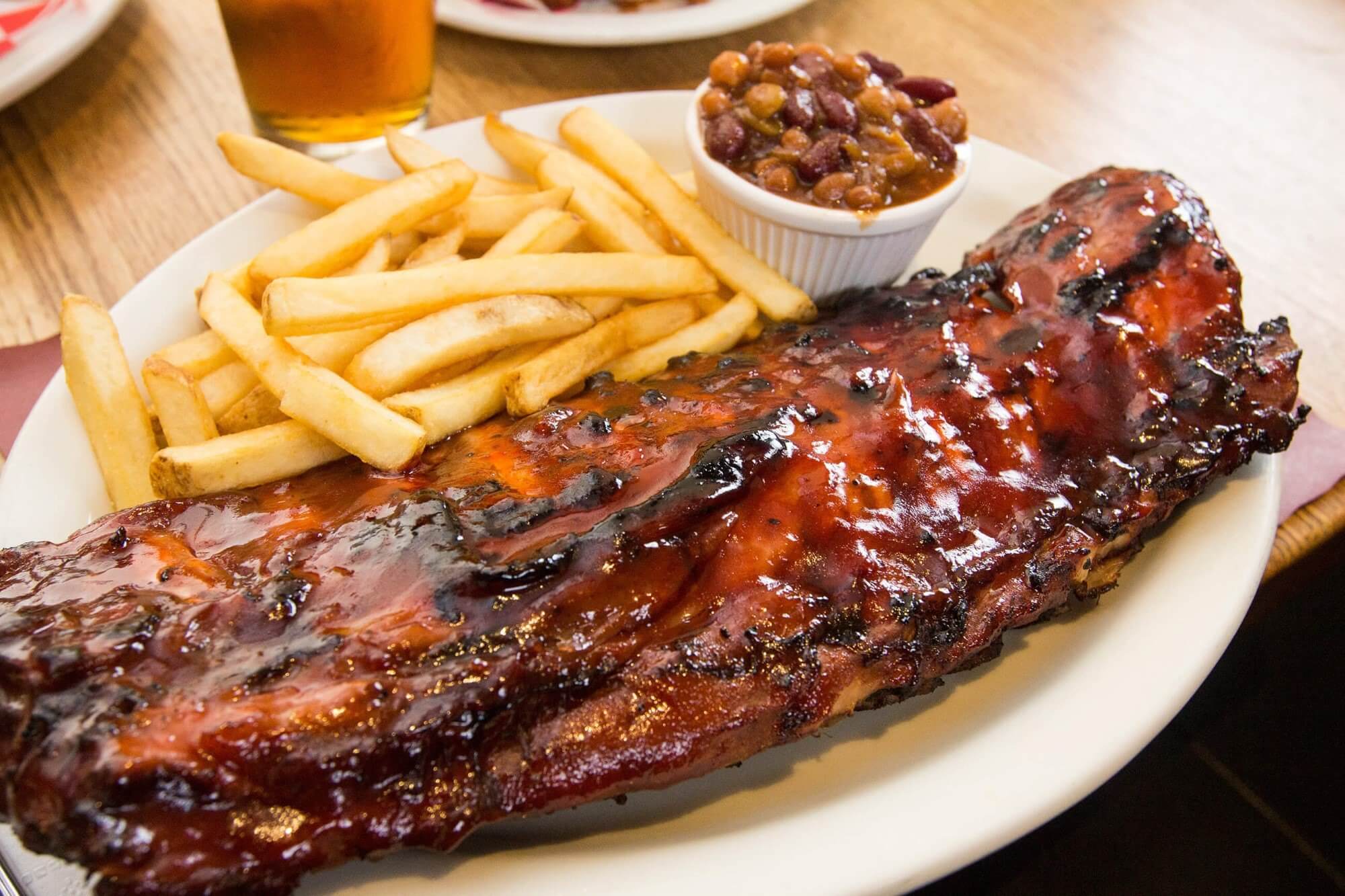History of BBQ Ribs

If there is any one food that could give apple pie, hot dogs, or burgers a run for its money as being true American cuisine, it would be BBQ. The tradition of cooking the meat slow and low over indirect heat has become so popular that it has spawned an entire culture. BBQ has a long history, at times touched by controversy, as is imminent by the BBQ feuds of the South. And, the history of ribs is deeply submerged in this culture. The history of BBQ ribs is as diverse as BBQ itself. It’s a path that began in the Caribbean, traveled north by Spanish Conquistadors, moved overseas to the Americas, and then seasoned with flavors of European settlers.
When Pigs Fly (or Sail)
The history of ribs could not be complete without mentioning how and when pigs arrived in the Americas. On the insistence of Queen Isabella, Christopher Columbus brought pigs along on his voyage to Cuba in 1493. However, Hernando de Soto landed in Tampa Bay, FL in 1539 with America’s first 13 pigs. In just about three years the flock grew to over 700 pigs, both domesticated and wild! Since that time and throughout U.S. history, BBQ pork ribs have become the quintessential American food.
The Beef Vs. Pork Controversy
Residents of the BBQ Belt, an area that stretches from the Carolinas to the East to Texas and Missouri in the West, and from Kentucky in the North down to the deep South would argue that pork BBQ is the only BBQ. Purists go a step further even to discount the beef-based BBQ of Kentucky and Texas as inauthentic. The pork supply in the south was cheap and easy to raise and required many fewer resources than raising cattle.
So Many Ribs So Little Time
There are many cuts of ribs that we enjoy today. From baby back ribs to spare ribs, or rib tips and riblets. What kind is your favorite?
- Baby Back Ribs
Baby back ribs come from the top of the rib cage between the spine and the spare ribs, below the loin muscle. The rack is shorter at one end, due to the natural tapering of the pig’s rib cage. A rack of back ribs contains a minimum of eight ribs but can include up to 13 ribs. - Spare Ribs
Spare ribs are taken from the belly side of the rib cage, below the section of back ribs and above the breastbone. They are flatter and contain more bone than meat, but more fat which makes the ribs more tender than back ribs. The shape is almost rectangular. - Rib Tips
Rib tips are short, meaty sections of rib attached to the lower end of the spare ribs, between the ribs and the sternum. These do not contain bone and are cut away from the spare ribs. - Riblets
Butchers create riblets by taking a full set of spare ribs and cutting them in half. It produces a set of short, flat ribs with a uniform shape and size. Once considered a waste product, riblets have become popular for their excellent flavor and lower cost.
Without a doubt, throughout the history of BBQ ribs, we now have a delicious dish that is done right only in America. Got a hankerin’ for some sticky, finger lickin’ ribs? Come on into Adam’s. We take the time to slow cook our ribs and finish them in our secret recipe sauce. The result? Tender, juicy, fall-off-the-bone ribs. Order up a platter and a delicious cold beer. A perfect meal anytime!
Share
I had no idea that pigs didn’t exist in the Americas until 1539. I have always loved baby back ribs most. I love trying out barbecue in different parts of the country since every region has its own take on the cuisine.